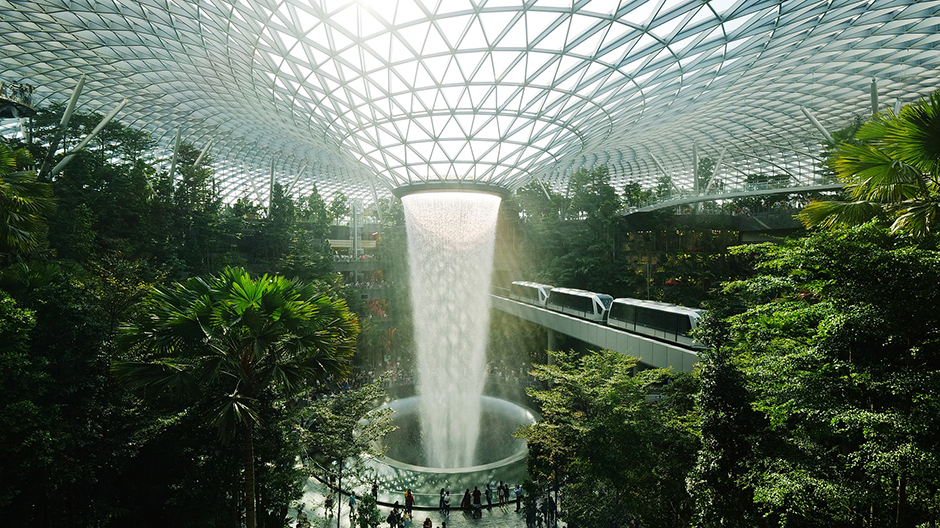In August 2020, CONQUAS, the quality assessment system of Singapore’s Building & Construction Authority, awarded its “STAR” rating, the highest possible, to the State Courts of Singapore built by Samsung C&T Engineering & Construction (E&C) Group. Completed in 2019 and opened earlier this year, the State Courts consist of two buildings that together are the tallest public buildings in Singapore.
Apart from court buildings, there are so many different types of public buildings that contribute to the running of a modern state and that add to the lives of people in great and small ways. The concept of public buildings is at least as old as ancient Greece and Rome, where temples, basilicas, public bathhouses, forum buildings and so on were spaces for public life. In the modern world, public buildings now also include airports and ferry terminals, post offices, town halls, libraries, schools, and hospitals.
What they are and what they do
A public building can be defined as a building used by the public for any purpose, such as assembly, education, entertainment, or worship. To take that a little further, it should be able to serve the public interest and/or be accessible by the public in some way. Generally, a public building can be built wholly or in part by public funds, though this is not always the case. Together with public spaces (parks, squares, plazas) and public works (bridges, roads, and other infrastructure), public buildings can be placed under the umbrella category of “public works.”
At the 3rd and 5th European Architecture Meetings, held in 2006 and 2008, respectively, at Utrecht University in the Netherlands, architectural historians discussed the various types of public buildings that exited throughout Europe between the late 1400s and the mid-1700s. Their conclusions can be divided into three categories of functions served by such structures: government and justice; mercantile functions; and education, health and social care.
These three categories can still be sensibly applied to contemporary public buildings. In the area of government and justice, there are municipal offices, bureaucracy, police stations, courts, and parliaments. For mercantile functions, think of stock exchanges, indoor marketplaces, railway stations, airports, and international shipping terminals. And in the public services of education, health and social care, there are schools, universities, hospitals, public health promotion centers, and asylums & shelters.
Why are public buildings so important?
Not only do public buildings provide physical places for public services that are crucial to the smooth running of a modern state, but they also extend the living and social spaces for the residents of their communities. Using the examples of schools, libraries and markets, they allow people to interact with each other as well as participate in educational or economic activities.
Public buildings also affect how we think and feel. In 1943 Britain’s Prime Minister Winston Churchill said, “We shape our buildings and afterwards our buildings shape us.” This is still true in our modern world – think of how the aesthetics or design of a building can affect the moods of people who visit it or work in it. To give just one example, the city of Seoul in Korea converted the orders for public buildings from “price competition” to “design competition” in 2013 to improve the design level of public buildings.
So what defines a successful public building? It used to be sufficient for the building to be merely structurally sound, but these days the conversation has broadened. The Project for Public Spaces, a U.S.-based nonprofit organization dedicated to creating public places that build communities, looks at all public works through the lens of four conditions of what makes a successful public space, and to what extent those conditions are fulfilled.
The first is “access and linkages.” A public space must be easy to get to and get through. The second is “comfort and image.” A public space should be aesthetically pleasing and there should be places to sit. Thirdly, “uses & activities” looks at whether there are things for the public to do in and around the public place. And lastly, “sociability” looks at whether and how much a public place becomes integrated into the local community. These four factors are things that should be taken into consideration when designing and constructing a public building.
Samsung C&T E&C constructs public works for the people
Apart from the State Courts of Singapore mentioned above, Samsung C&T E&C Group has participated in the construction of public buildings both in and out of Korea.
In the field of airports, Samsung C&T E&C has built up some experience, having participated in the construction of Incheon International Airport in Korea, Hong Kong International Airport, and Changi Airport in Singapore. All three of these have been recognized and awarded by the World Airport Awards and World’s Airport Service Quality Awards for many years.
The verdant seven-story wall inside Seoul City Hall, which won the Guinness World Record for tallest vertical garden in the world, was also constructed by Samsung C&T E&C and succeeds in giving the prime public building of Korea’s capital a friendly and life-giving public interior to its visitors.
But it’s not just public buildings: Samsung C&T E&C has also participated in other public works projects, in particular bridges. To cite just three examples, the Yeongjong and Incheon Bridges in Korea and the Mersey Gateway Bridge in the United Kingdom all saw the participation of Samsung C&T E&C.
Given its abundant experience, let’s see what else Samsung C&T E&C Group will achieve in future public buildings and public works projects.










